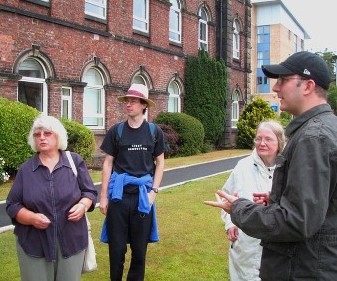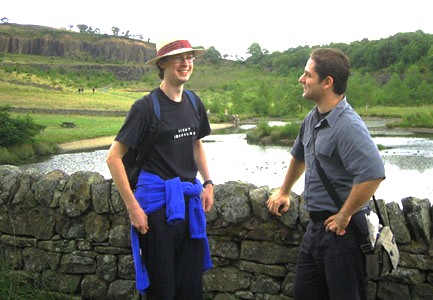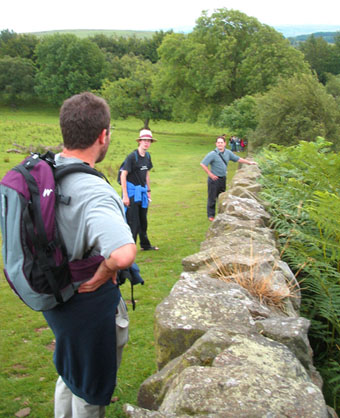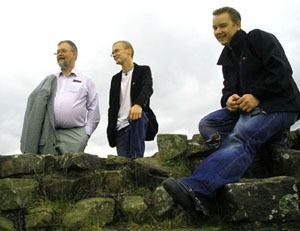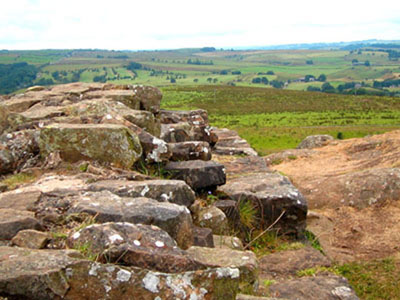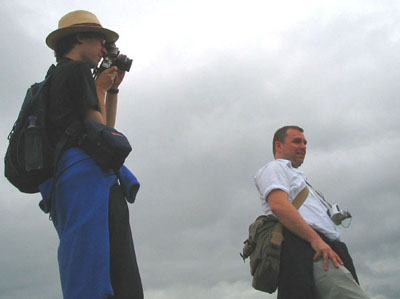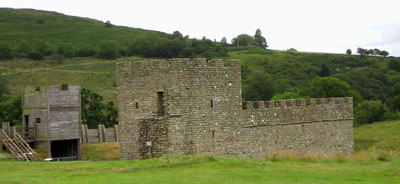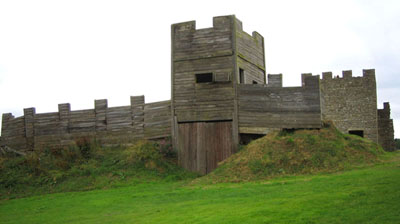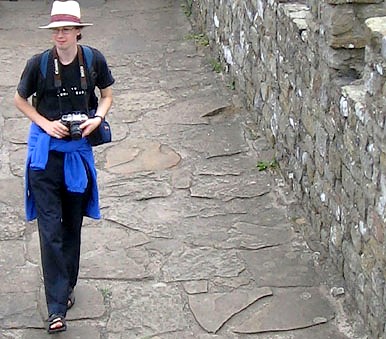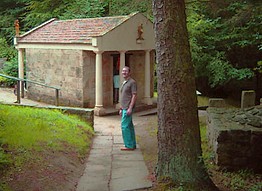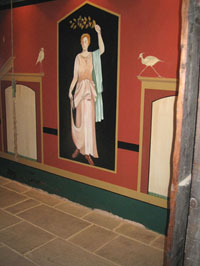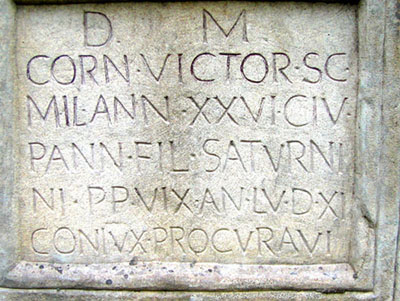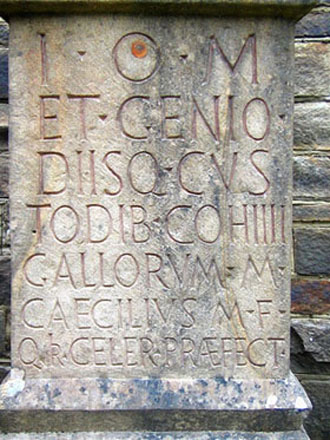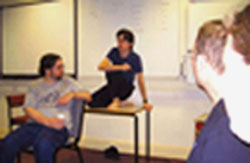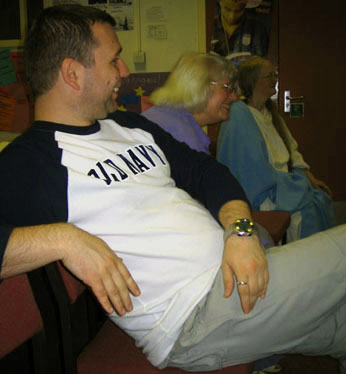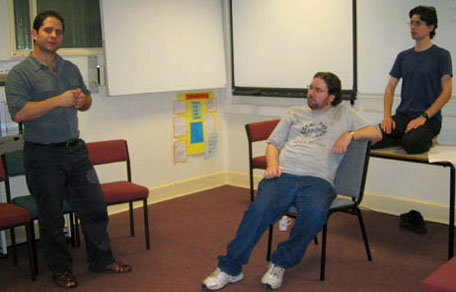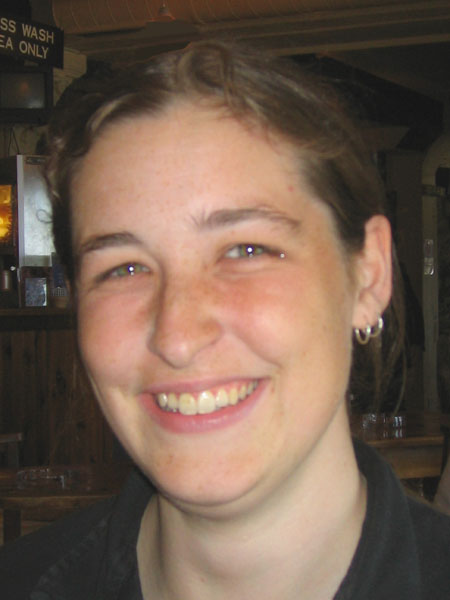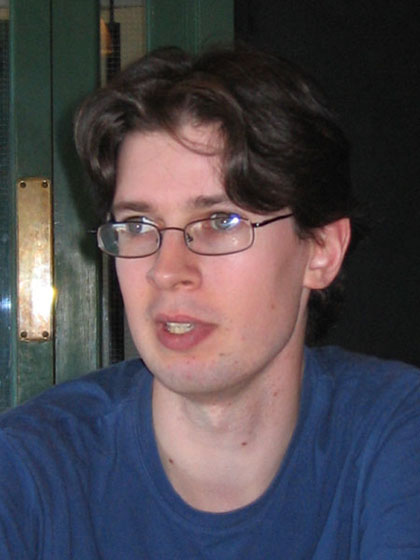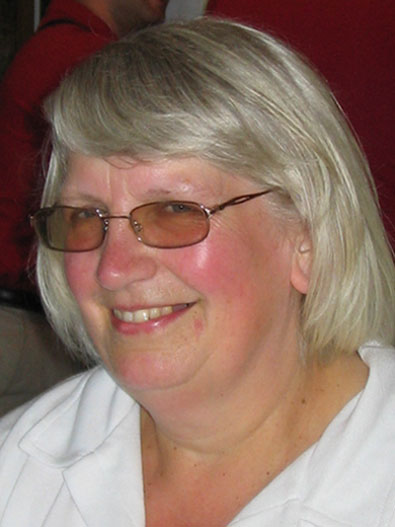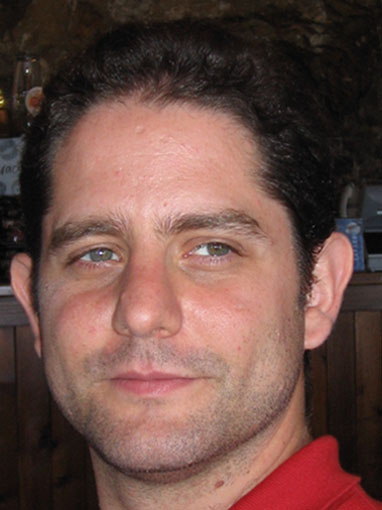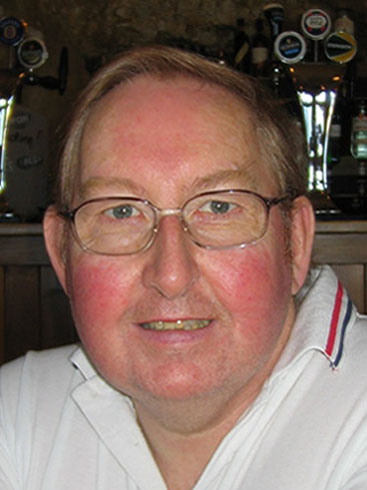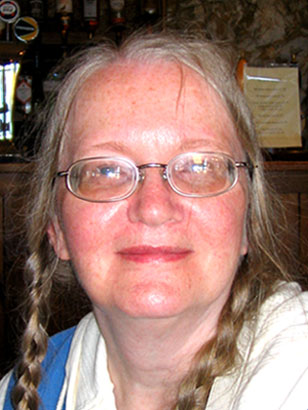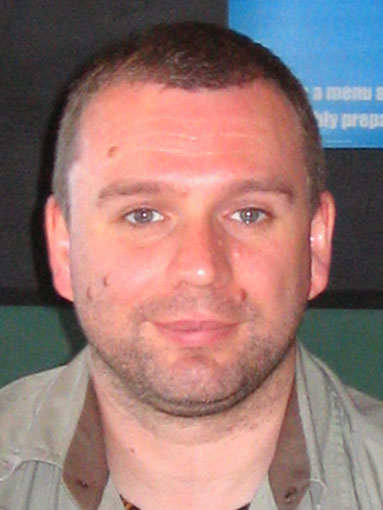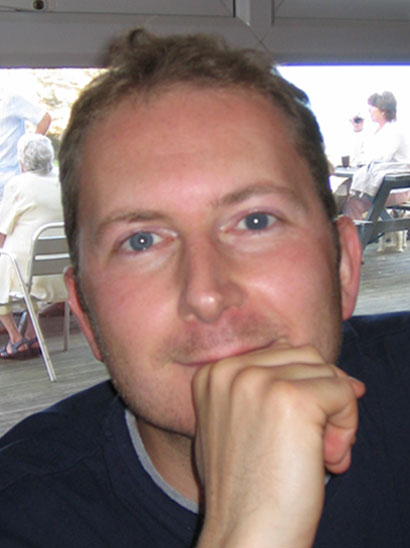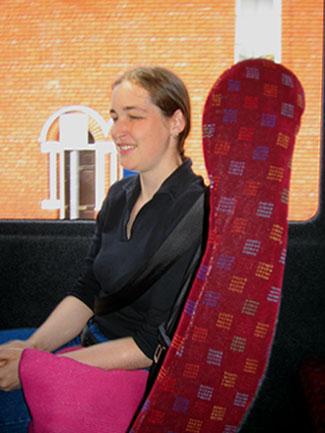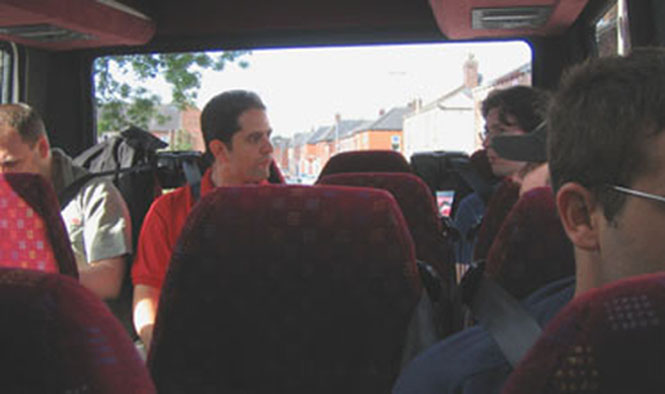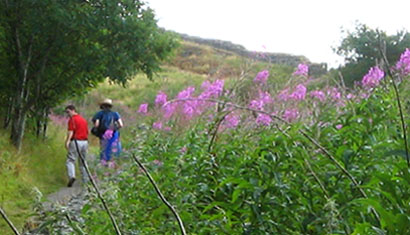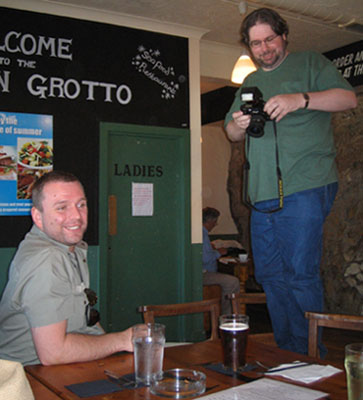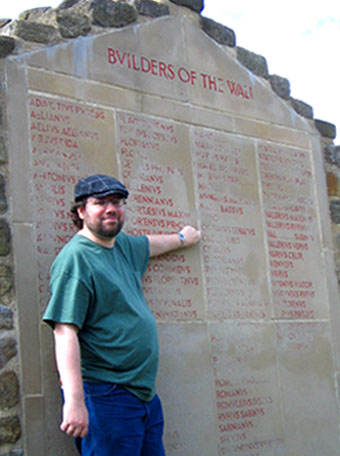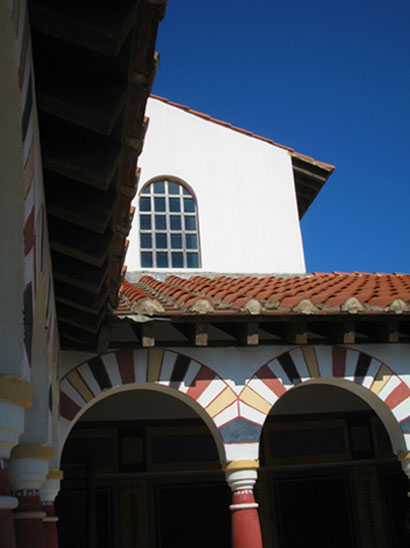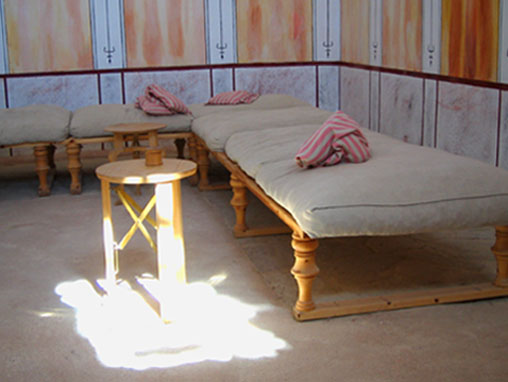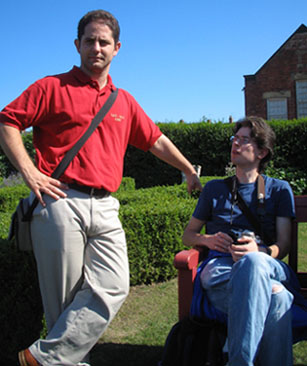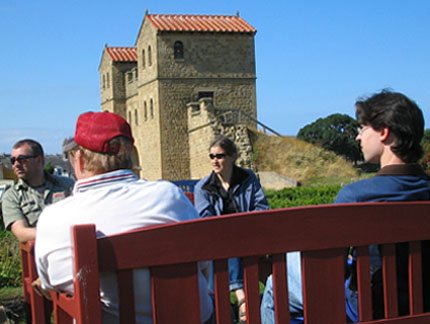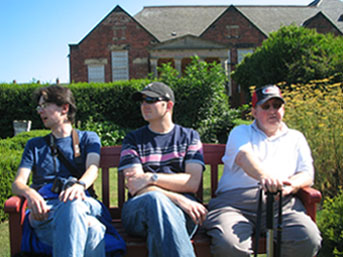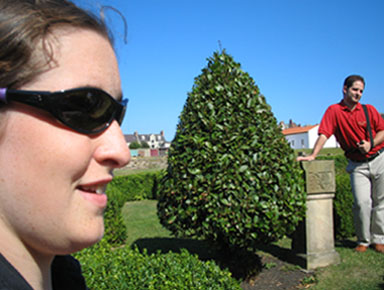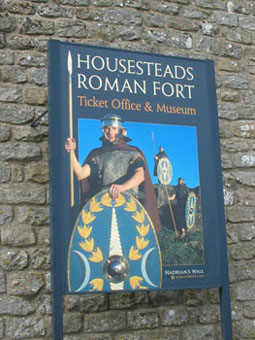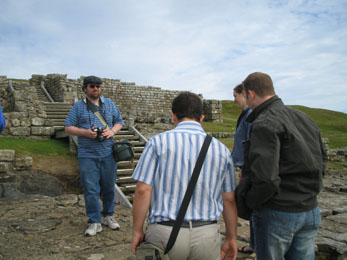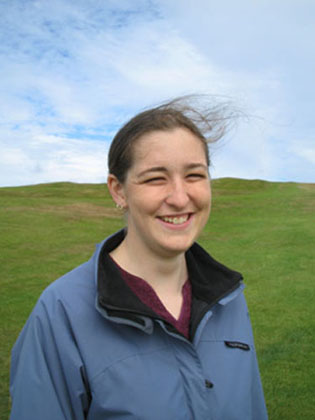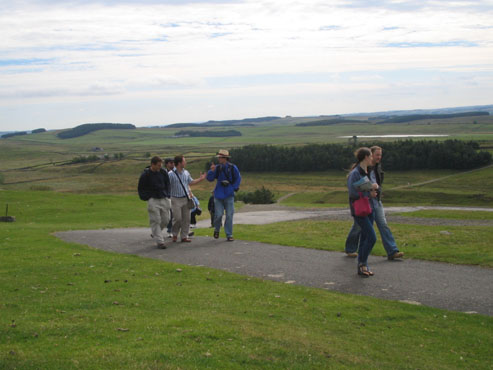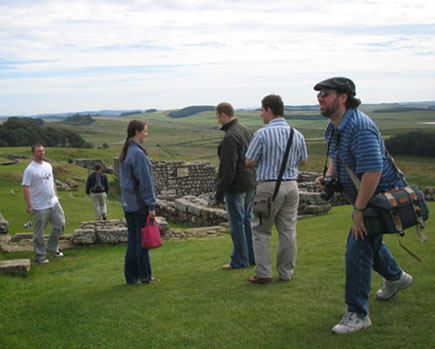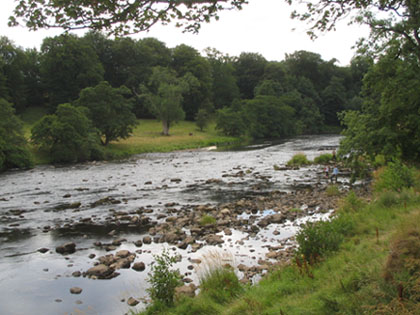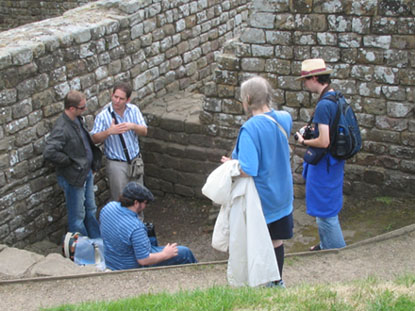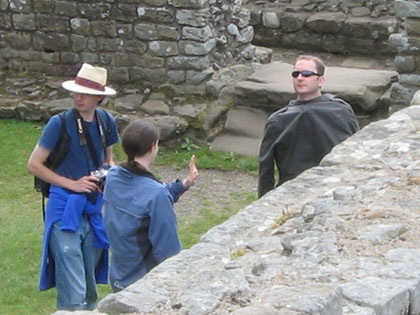Conventus Britannia 2759 auc - PMA pics (Nova Roma)
(New page: ====Day 3==== '''{{Aug 5}} (Saturday 5th August)''' <br style="clear:both"/> Luguvalium (Carlisle) is now a modern city with respectable bricks houses and institutions, such [[Image:...) |
(→Day 3) |
||
| Line 1: | Line 1: | ||
| + | =Day 3: {{Aug 5}} (Saturday 5th August)= | ||
| + | <br> | ||
| + | Luguvalium (Carlisle) is now a modern city, which seems sleeping a bit and longing for its golden age, in the 19th cc., when factories were plenty of workers, and that the sea, westward, brought ships from all over the world. | ||
| − | + | I have arrived in the night before, after a unusual trip from Normandy, whose boat left me in Plymouth, which I regret having not time to visit: the place of the city, its wonderful bay let the visitor understand why Britain has, for a long time ruled the seas. | |
| − | + | I finally realized to catch a taxi to join the central station, and London, its underground where the electric light make the white brick walls more white. A last train, a private one and an incredible expensive price, just to remember that I left France and public railways. At sharp midnight, after a sweet travel through the summer night, I stepped down in Carlisle. Before St Martin College and its accomodation, confirmed by efficient Laureatus and a charmant Aureliana, High Street. | |
| − | + | I had forgotten that we were Saturday. At this time, the drunking saturday ceremonies had not crossed the Channel. There are not so many pubs, but it is every twenty yards the same show of teen and young drunk people. At a moment, I think about crossing the street to join the quieter pavement. But I renounced, willing to taste this part of Britain life. I had visited several times Britannia, but it was 20 years before, and the mood was different. | |
| − | + | A young woman takes my arm. She wants me to get her back home. I manage seizing my suitcase on my other hand, for it is a bit difficult holding both it and the lady. I finally leave the girl two blocks ahead. Ten minutes later, I reach St Martin College. A very sympathetic employee welcomes me, and I reallize that I am in northern England, the one that I happened to see, these last years, in Mike Leigh or Kenneth Loach movies. This is not Oxford England, where people speak the language that English teachers teach in France. This is another land, where people do not call you "you", but "y". In the first minutes, you feel as if you had been dropped off over a kind of Suburban Brigadoon. There is something of magic in this accent. With time passing, you tell yourself that there must be some old Celtic pronounciation behind this, and, finally, you feel relieved, and when you wake up, it is the morning and, at the floor below, time to meet, around a breakfast, the hosting team and all the yet arrived. | |
| + | |||
| + | |||
| + | '''Aureliana''' (left) and '''Laureatus''' (right) are the directors of this morning expedition to Vindolanda. It is now time to check the ''vexillatio'', in one of St Martin College courtyards. '''Cordus''' and '''Scholastica''' are in the center of the picture : | ||
[[Image:Checking the troops.jpg|frame|Checking the troops]] | [[Image:Checking the troops.jpg|frame|Checking the troops]] | ||
| − | |||
| − | |||
| − | |||
| − | |||
| − | <br | + | Our first stop is at Wallton Crags. The place deserves its name. <br> |
| − | ''Legio Hispana'' : | + | We have to walk in a pleasant track. The way is full of summer smells, of<br> |
| − | while Astur,like | + | recent rains et fresh morning, yet of bees and happy mood. |
| + | |||
| + | '''Astur''' has yet opened his bag of jokes and good words, <br> | ||
| + | deploying his Latin or his good fluent vernacular language. <br> | ||
| + | He looks to '''Cordus''' friendly, and I feel that the day will be a good one<br> | ||
| + | (''see picture, below''). The track snakes along a quiet water, before <br> | ||
| + | it draws us onto the top of the hill, where the Wall waits for us. | ||
| + | |||
| + | |||
| + | [[Image:Wallton track.jpg|frame|left|''Non te credo Astur !'']] | ||
| + | |||
| + | |||
| + | |||
| + | |||
| + | There, after a little wooden cattle door, we see the ridge, up <br> | ||
| + | on our left. The clouds are fighting with the sun for ruling the sky.<br> | ||
| + | |||
| + | On the way up, we understand that physical fitnesse is not a shared good in | ||
| + | ''Legio Hispana'' : as a tough vet optio, '''Paulus''' seems to refrain launching "waiting for you, comrades!" while '''Astur''', like Atlas the earth, is firmly holding Hadrian's wall, fearing that it might flee to Scotland (''below right''). | ||
[[Image:Day 3 (003) - Waiting for you, boys- -M-(small).jpg|frame|right|Waiting for you, boys !]] | [[Image:Day 3 (003) - Waiting for you, boys- -M-(small).jpg|frame|right|Waiting for you, boys !]] | ||
| − | On the top of the hill, we are glad to meet, among a group of | + | <br clear="left"> |
| − | our friends from Thule, whose ''raedae'' | + | On the top of the hill, we are glad to meet, among a group of female tourists, |
| + | our friends from Thule, whose presence let our English hosts that something seems rotten in the kingdom of their ''raedae'' or of their road maps (''see picture left below''). Here thus stands the Thulenses triumviri : Censorius '''Quintilianus''', '''Falco''', and '''Pictor'''. | ||
| − | [[Image:Day 3 (004) - Thule team in Wallton Crags- -M-(small).jpg|frame|left|''Thulenses triumviri | + | [[Image:Day 3 (004) - Thule team in Wallton Crags- -M-(small).jpg|frame|left|''Thulenses triumviri'']] |
| − | <br> | + | |
| − | We are now watching in front of us, downhill, to the North, thinking to the feelings that roman troops could have, 1,800 years before, when watching Selgovae, Votadini and other Caledonian warriors | + | <br clear="left"> |
| − | The wall is here at our feet, thick, impressing, commanding the whole landscape around us (''see picture, below left'').<br> | + | |
| + | We are now watching in front of us, downhill, to the North, thinking to <br>the feelings that roman troops could have, 1,800 years before, when watching <br>Selgovae, Votadini and other Caledonian warriors running at them.<br> | ||
| + | The wall is here at our feet, thick, impressing, commanding the whole landscape<br> around us (''see picture, below left'').<br> | ||
[[Image:Day 3 (005) - The wall in the hills, in Wallton crags- -M-(small).jpg|frame|left|''Colles molles viridique Hadrianenses'']] | [[Image:Day 3 (005) - The wall in the hills, in Wallton crags- -M-(small).jpg|frame|left|''Colles molles viridique Hadrianenses'']] | ||
<br><br><br><br><br><br> | <br><br><br><br><br><br> | ||
| − | A few more pictures later, | + | A few more pictures later, we leave Wallton Crags for Chesterholm, the ancient ''Vindolanda'', where a <i>paparazzo</i> is shooting a Movie Roman star, who vaguely looks like Maximus, Ridley Scott's hero (''see picture, below right''). Stormy weather is coming, but Lupus stands firm!<br><br> |
[[Image:Day 3 (006) - Two men under dark skies- -M-(small).jpg|frame|right|''Cordus et Lupus immortales'']] | [[Image:Day 3 (006) - Two men under dark skies- -M-(small).jpg|frame|right|''Cordus et Lupus immortales'']] | ||
At this time, it is interesting to note that, except the settlements that they have created ''ex nihilo'', Romans have been clever enough not to change the names of the places, villages, towns of the countries that they have invaded and occupied. | At this time, it is interesting to note that, except the settlements that they have created ''ex nihilo'', Romans have been clever enough not to change the names of the places, villages, towns of the countries that they have invaded and occupied. | ||
| − | We have seen, for example, that Carlisle was called "Luguvalium" and Chesterholm "Vindolanda". Both names come from the celtic language, which was common to the most part of Europe at Republican times. Luguvalium is a latin interpretation of "Lugu-ialon" which means "place/settlement of Lug". <br>Lug was one of the main celtic gods, the equivalent of Apollo. In the same mood, the french modern city of Lyon has ingerited its name from celtic/gallic "Lug-dunum" (i.e. the fortress of Lug). | + | We have seen, for example, that Carlisle was called "''Luguvalium''" and Chesterholm "''Vindolanda''".<br> Both names come from the celtic language, which was common to the most part of Europe at Republican times. ''Luguvalium'' is a latin interpretation of "Lugu-ialon" which means "place/settlement of Lug". <br>Lug was one of the main celtic gods, the equivalent of Apollo. In the same mood, the french modern city of Lyon has ingerited its name from celtic/gallic "Lug-dunum" (i.e. the fortress of Lug). |
| − | Vindolanda meant "white moor". <br>This observation is not an exception : we may verifiy this phenomenon all around Romanised Europe.<br><br> | + | ''Vindolanda'' meant "white moor". <br>This observation is not an exception : we may verifiy this phenomenon <br>all around Romanised Europe.<br><br> |
| − | Vindolanda was a key position in the defence against northern peoples. | + | ''Vindolanda'' was a key position in the defence against northern peoples. It is not "on" Hadrian's wall, but a few kilometers south, roughly in the middle of the length of the wall crossing England. Before the wall, the place had already welcome several forts. ''Vindolanda'' is, close to the roman fort, the most extensive civil settlement to be seen in whole Britain. It was first built in the middle of the 2nd century and has been<br> occupied, with a short break, until the late 3rd century.<br><br> |
Once the civil settlement visited, you are attracted by a full-scale reconstruction of a turret and lenght of the Wall, on your left. This was the south gate of the early fort. (''see pictures, below, left and right'').<br><br><br> | Once the civil settlement visited, you are attracted by a full-scale reconstruction of a turret and lenght of the Wall, on your left. This was the south gate of the early fort. (''see pictures, below, left and right'').<br><br><br> | ||
[[Image:Day 3 (007) - South gate fort SW view- -M-(small).jpg|frame|left|Southgate early fort from south-west]] | [[Image:Day 3 (007) - South gate fort SW view- -M-(small).jpg|frame|left|Southgate early fort from south-west]] | ||
| Line 47: | Line 70: | ||
<br style="clear:both"/> | <br style="clear:both"/> | ||
| − | We may still find roman local soldiers guarding the ''limes'' (''see picture right''). | + | We may still find roman local soldiers guarding<br> the ''limes'' (''see picture right''). |
| − | [[Image: | + | [[Image:Vindocordus.jpg|frame|right|Watching the ''limes'']] |
| − | + | ||
| − | After having visited the remains of the roman fort, we have walked down in direction of the museum.<br> | + | |
| − | Here appears first a reconstituted temple, that Laureatus is showing me. (''see picture below, left''). | + | |
| − | The | + | |
| − | [[Image: | + | |
| + | After having visited the remains of the roman fort, we have walked <br> | ||
| + | down in direction of the museum.<br> | ||
| + | Here appears first a reconstituted temple, that '''Laureatus''' is <br> | ||
| + | showing to me. (''see picture below, left''). | ||
| + | |||
| + | |||
| + | The paintings inside have been recreated too, even if the modern painter<br> | ||
| + | is not as skilled than Pompei's artists (''see picture far right below''). <br><br><br><br> | ||
| + | [[Image:Beatus Laureatus.jpg|frame|left|''Beatus templatus Laureatus '']] | ||
| − | |||
[[Image:Day 3 (011) - Inside Vindolanda temple- -M-(small).jpg|frame|right|Inside the temple]] | [[Image:Day 3 (011) - Inside Vindolanda temple- -M-(small).jpg|frame|right|Inside the temple]] | ||
| − | Below the temple a romantic | + | Below the temple <br> |
| − | <br> by Paulus and Astur (see Cordus pictures).<br> We succeed | + | a romantic small <br> |
| − | If you | + | bridge takes us to <br> |
| − | + | the museum. Before,<br> | |
| + | a wall bear two roman <br> | ||
| + | inscriptions. <br>With '''Laureatus''',<br> | ||
| + | we approach them,<br> | ||
| + | soon joined by '''Paulus'''<br> | ||
| + | and '''Astur''' (''see Cordus pictures'').<br> | ||
| + | We succeed decoding these interesting writings. | ||
| + | <br clear="left"> | ||
| + | If you are interested in Victor's inscription translation (''see picture left below''),<br> | ||
| + | please report to the article on the following page : <br> http://www.crystalwebvision.com/aedil/albucius.htm.<br> <br>And I let you fight against the other <i>inscriptio</i>, Caecilius's one (''see picture right below'').<br> | ||
<br style="clear:both"/> | <br style="clear:both"/> | ||
| + | |||
[[Image:Day 3 (012) - Victor epigraphia- -M-(small).jpg|frame|left|''Victor epigraphia'']] | [[Image:Day 3 (012) - Victor epigraphia- -M-(small).jpg|frame|left|''Victor epigraphia'']] | ||
Revision as of 19:46, 25 October 2008
Contents |
Day 3: Non. Sext. ‡ (Saturday 5th August)
Luguvalium (Carlisle) is now a modern city, which seems sleeping a bit and longing for its golden age, in the 19th cc., when factories were plenty of workers, and that the sea, westward, brought ships from all over the world.
I have arrived in the night before, after a unusual trip from Normandy, whose boat left me in Plymouth, which I regret having not time to visit: the place of the city, its wonderful bay let the visitor understand why Britain has, for a long time ruled the seas.
I finally realized to catch a taxi to join the central station, and London, its underground where the electric light make the white brick walls more white. A last train, a private one and an incredible expensive price, just to remember that I left France and public railways. At sharp midnight, after a sweet travel through the summer night, I stepped down in Carlisle. Before St Martin College and its accomodation, confirmed by efficient Laureatus and a charmant Aureliana, High Street.
I had forgotten that we were Saturday. At this time, the drunking saturday ceremonies had not crossed the Channel. There are not so many pubs, but it is every twenty yards the same show of teen and young drunk people. At a moment, I think about crossing the street to join the quieter pavement. But I renounced, willing to taste this part of Britain life. I had visited several times Britannia, but it was 20 years before, and the mood was different.
A young woman takes my arm. She wants me to get her back home. I manage seizing my suitcase on my other hand, for it is a bit difficult holding both it and the lady. I finally leave the girl two blocks ahead. Ten minutes later, I reach St Martin College. A very sympathetic employee welcomes me, and I reallize that I am in northern England, the one that I happened to see, these last years, in Mike Leigh or Kenneth Loach movies. This is not Oxford England, where people speak the language that English teachers teach in France. This is another land, where people do not call you "you", but "y". In the first minutes, you feel as if you had been dropped off over a kind of Suburban Brigadoon. There is something of magic in this accent. With time passing, you tell yourself that there must be some old Celtic pronounciation behind this, and, finally, you feel relieved, and when you wake up, it is the morning and, at the floor below, time to meet, around a breakfast, the hosting team and all the yet arrived.
Aureliana (left) and Laureatus (right) are the directors of this morning expedition to Vindolanda. It is now time to check the vexillatio, in one of St Martin College courtyards. Cordus and Scholastica are in the center of the picture :
Our first stop is at Wallton Crags. The place deserves its name.
We have to walk in a pleasant track. The way is full of summer smells, of
recent rains et fresh morning, yet of bees and happy mood.
Astur has yet opened his bag of jokes and good words,
deploying his Latin or his good fluent vernacular language.
He looks to Cordus friendly, and I feel that the day will be a good one
(see picture, below). The track snakes along a quiet water, before
it draws us onto the top of the hill, where the Wall waits for us.
There, after a little wooden cattle door, we see the ridge, up
on our left. The clouds are fighting with the sun for ruling the sky.
On the way up, we understand that physical fitnesse is not a shared good in Legio Hispana : as a tough vet optio, Paulus seems to refrain launching "waiting for you, comrades!" while Astur, like Atlas the earth, is firmly holding Hadrian's wall, fearing that it might flee to Scotland (below right).
On the top of the hill, we are glad to meet, among a group of female tourists,
our friends from Thule, whose presence let our English hosts that something seems rotten in the kingdom of their raedae or of their road maps (see picture left below). Here thus stands the Thulenses triumviri : Censorius Quintilianus, Falco, and Pictor.
We are now watching in front of us, downhill, to the North, thinking to
the feelings that roman troops could have, 1,800 years before, when watching
Selgovae, Votadini and other Caledonian warriors running at them.
The wall is here at our feet, thick, impressing, commanding the whole landscape
around us (see picture, below left).
A few more pictures later, we leave Wallton Crags for Chesterholm, the ancient Vindolanda, where a paparazzo is shooting a Movie Roman star, who vaguely looks like Maximus, Ridley Scott's hero (see picture, below right). Stormy weather is coming, but Lupus stands firm!
At this time, it is interesting to note that, except the settlements that they have created ex nihilo, Romans have been clever enough not to change the names of the places, villages, towns of the countries that they have invaded and occupied.
We have seen, for example, that Carlisle was called "Luguvalium" and Chesterholm "Vindolanda".
Both names come from the celtic language, which was common to the most part of Europe at Republican times. Luguvalium is a latin interpretation of "Lugu-ialon" which means "place/settlement of Lug".
Lug was one of the main celtic gods, the equivalent of Apollo. In the same mood, the french modern city of Lyon has ingerited its name from celtic/gallic "Lug-dunum" (i.e. the fortress of Lug).
Vindolanda meant "white moor".
This observation is not an exception : we may verifiy this phenomenon
all around Romanised Europe.
Vindolanda was a key position in the defence against northern peoples. It is not "on" Hadrian's wall, but a few kilometers south, roughly in the middle of the length of the wall crossing England. Before the wall, the place had already welcome several forts. Vindolanda is, close to the roman fort, the most extensive civil settlement to be seen in whole Britain. It was first built in the middle of the 2nd century and has been
occupied, with a short break, until the late 3rd century.
Once the civil settlement visited, you are attracted by a full-scale reconstruction of a turret and lenght of the Wall, on your left. This was the south gate of the early fort. (see pictures, below, left and right).
We may still find roman local soldiers guarding
the limes (see picture right).
After having visited the remains of the roman fort, we have walked
down in direction of the museum.
Here appears first a reconstituted temple, that Laureatus is
showing to me. (see picture below, left).
The paintings inside have been recreated too, even if the modern painter
is not as skilled than Pompei's artists (see picture far right below).
Below the temple
a romantic small
bridge takes us to
the museum. Before,
a wall bear two roman
inscriptions.
With Laureatus,
we approach them,
soon joined by Paulus
and Astur (see Cordus pictures).
We succeed decoding these interesting writings.
If you are interested in Victor's inscription translation (see picture left below),
please report to the article on the following page :
http://www.crystalwebvision.com/aedil/albucius.htm.
And I let you fight against the other inscriptio, Caecilius's one (see picture right below).
Day 4
a.d. VIII Id. Sext. ‡ (Sunday 6th August)
Three shots of the Senate meeting. Shame that the attendants should not have worn their toga or stola...
Day 5
a.d. VII Id. Sext. ‡ (Monday 7th August)
Riders eleven
Misses the picture shooter, this time Publius Memmius Albucius. Here come the terrible ten :
"On the road again"
A walk up to Cawfields castle
Prandium
Segedunum
Arbeia
Day 6
a.d. VI Id. Sext. ‡ (Tuesday 8th August)
Housesteads - Vercovicium
Chesters - Cilurnum
